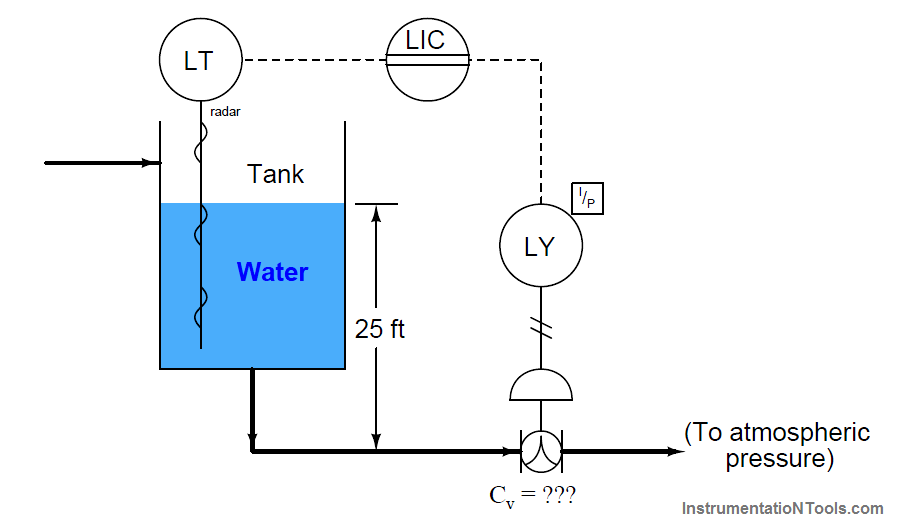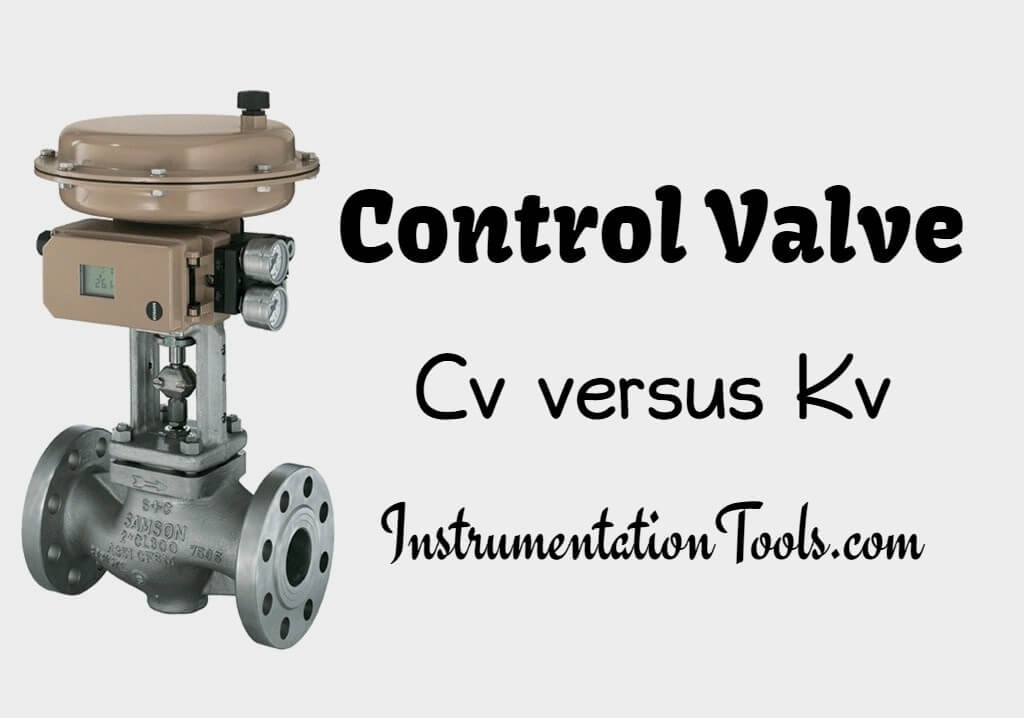What Is The Meaning Of Cv In Control Valve
Cv is the number of US gallons that goes through the valve at 60F and with a pressure drop of 1 psi. The Cv tells you how to properly size your valve so it has minimal effect on the hydraulic efficiency youve engineered into your system.

Importance Of Proper Control Valve Sizing Instrumentation Tools
Cv is the flow of water through a valve at 60 degrees F in US gallonsminute at a pressure drop of 1 PSI.

What is the meaning of cv in control valve. Iv The control valve Installed characteristics refer to the relationship between the volumetric flowrate F Y-axis through the valve AND the valve travel or opening. The flow coefficient of a control valve Cv is a numerical value expressing the number of gallons per minute flow of water the valve will pass with a constant pressure drop of 1 PSI from inlet to outlet. Gallons per minute of water which will pass through a given flow restriction with a pressure drop of 1 psi.
For measuring the valve capacity of control valves the coefficient Cv or its metric equivalent Kv is adopted. Pressure Profile Fluid flowing through a control valve obeys the basic laws of conservation of mass and energy and the. Cv in case of control valve indicates its size Port Area for the certain design value of flow with the required pressure dropThe standard defination of Cv is the number of US.
What is Flow Coefficient Cv. Flow coefficient Cv and Flow Factor Kv are values used to specify the hydraulic capacity of a control valve. It is technically defined as the volume of water at 60F in US gallons that will flow through a valve per minute with a pressure drop of 1 psi across the valve.
When Sizing calculating which size valve is needed for your application a control valve specialist needs to calculate the flow coefficient. It is defined as the flow rate in cubic meters per hour m3h of water at a temperature of 16 celsius with a pressure drop across the valve of 1 bar. Cv by definition is the number of gallons per minute GPM a valve will flow with a 1 psi pressure drop across the valve.
The valve flow coefficient Cv is the number of US. The Cv is the number of US gallons of water the valve will pass with a differential pressure of 1 psi. Cv is the flow coefficient in imperial units.
The metric equivalent of Cv is Kv which is defined as the amount of water that will flow in m3hr with 1bar pressure drop. The Cv or flow coefficient of the valve plays a much larger part in the valves performance than determining how many GPM gallons per minute can pass through the valve. The CV factor is a standard used by all valve manufacturers.
The formula used to select the valve Cv with the specified differential pressure is. Calculating control valve CV. The formula used to select the valve Cv with the specified differential pressure is.
Unless specifically stated Cv usually means Cvmax since it determines the valve maximum flow capacity which is of interest in flow study and valve size selection. For example a valve with a Cv of 10 will flow 10 GPM with a 1 psi pressure drop. The flow of water through a valve at 60F in US gallonsminute gpm at a pressure drop of 1lbin².
It applies to the factor of the head drop Δh or pressure drop ΔP over a valve with the flow rate Q. This assumes there is no flashing or cavitation of the fluid. Δ P is the pressure drop across the valve expressed in psi.
Flow coefficient is an imperial measurement and is defined as. For example a control valve with a Cv rating of 45 should flow 45 gallons per minute of water through it with a 1 PSI. Valve Flow Coefficient Cv is a valves capacity for a liquid or gas to flow through it.
What is the Cv and Kv of a control valve. Q is the flowrate gpm. A valve that is sized correctly is a valve that is quiet has accurate flow control.
Gallons that can pass through a valve in a fully open position at a pressure drop of 1 PSI. The standard equation for a valves capacity in liquid service is. Kv is the flow coefficient in metric units.
In simpler terms the larger the opening in a. In more practical terms the flow coefficient Cv is the volume in US gallons of water at 60 F that will flow per minute through a valve with a pressure drop of 1 psi across the valve. Gallons per minute of water at 60F that will flow through a control valve at a specified opening when a pressure differential of 1psi is applied across the valve.
Water System Control Valve Fundamentals CV is a term constantly used in selecting valves. Cv is commonly called the flow coefficient and Kv is commonly called the flow factor. Cv by definition is the number of gallons per minute GPM a valve will flow with a 1 psi pressure drop across the valve.
When selecting a control valve for an application the calculated C v is used to determine the valve size and the trim size that will allow the valve to pass the desired flow rate and provide stable control of the process fluid. The Valve Coefficient Cv in Imperial unit the number of US GALLON PER MINUTE of water at 60 F that will flow through a valve at specific opening with a. For example a valve with a Cv of 10 will flow 10 GPM with a 1 psi pressure drop.
This rating is usually given for the valve in its wide-open state. It is a number published by the valve manufacturer that describes the number of US. Control valve CV refers to the flow coefficient of the valve.
Cv and Kv are 2 coefficient allowing to relate the pressure drop through a valve to the flowrate of fluid going through. Cv is the valve Cv. It is actually possible to convert Kv and Cv and have the expression in the right unit for the calculation of interest.

Control Valve Cv Calculation For Liquids Simple Science Youtube

Control Valve Cv What It Means And How To Calculate It Visaya

Control Valve Cv Calculation For Liquids Simple Science Youtube

Basics Of Control Valve Sizing Key Terms Concepts Learning Instrumentation And Control Engineering

Control Valve Cv What It Means And How To Calculate It Visaya

Control Valve Relation Between Cv And Kv Cv 1 156kv

Control Valve Sizing Basics What Is Pressure Drop Youtube

The Valve Flow Coefficient Cv Learning Instrumentation And Control Engineering

Control Valve Flow Characteristics Learning Instrumentation And Control Engineering
Post a Comment for "What Is The Meaning Of Cv In Control Valve"